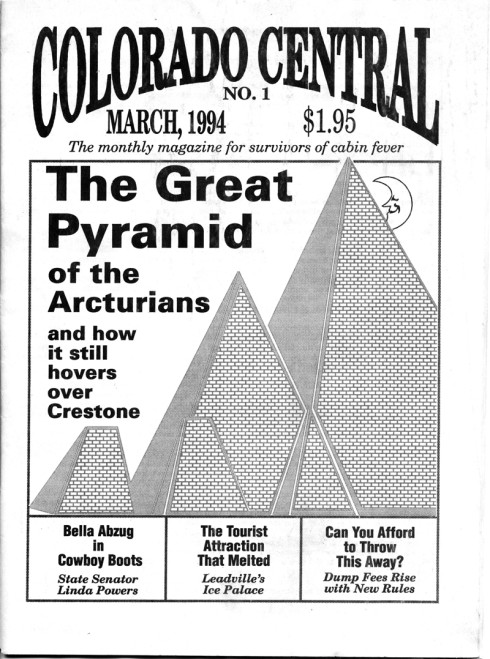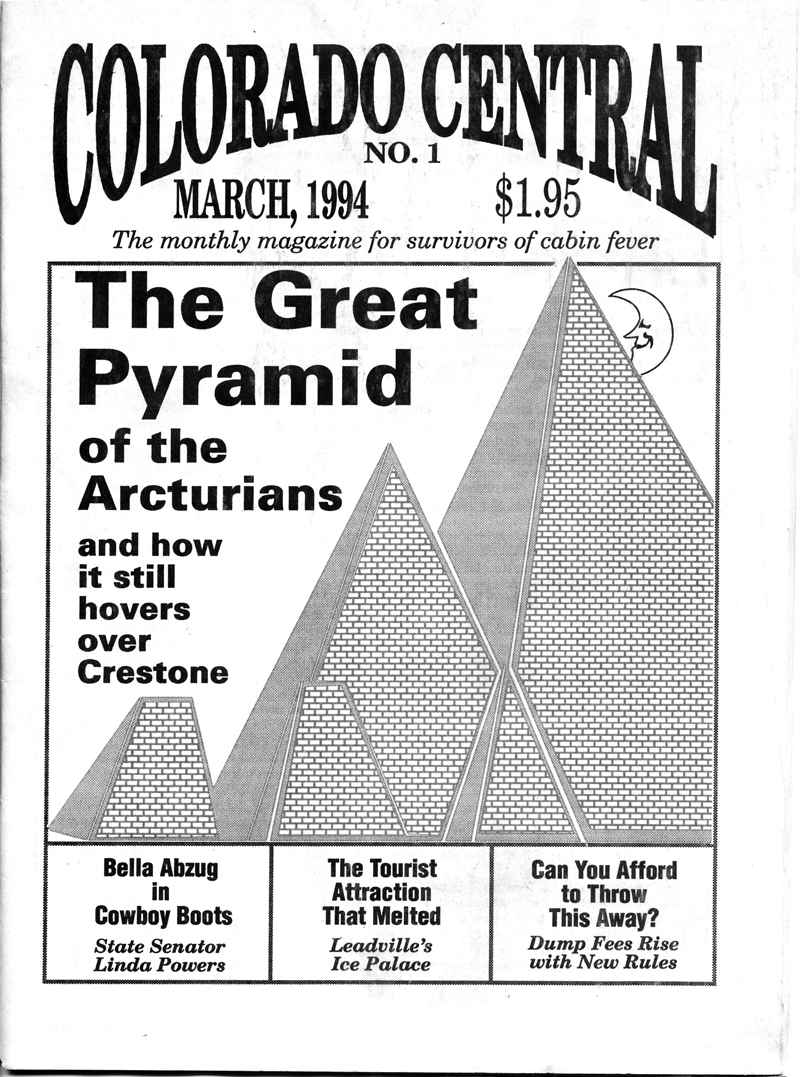By Peter Anderson
The nightmare would begin something like this: From the western flank of the Sangres, I am looking down on my home territory, out across the windswept savannah of the San Luis Valley toward the usual landmarks – San Antonio Mountain and the south San Juans off to the southwest, the La Garita Range to the west, even a few of the great Sawatch peaks off to the north. But there is a new mountain in the foreground … no, not a mountain … it’s a man-made pyramid … a pink pyramid four hundred feet tall. What the … ?
 Fortunately, many residents of Crestone/Baca said no to this nightmare twenty years ago.
Fortunately, many residents of Crestone/Baca said no to this nightmare twenty years ago.
In a brilliant article that appeared in Colorado Central Magazine in April of 1994, Martha Quillen documented the proposed Pink Pyramid and the local resistance movement that took shape to prevent it. What Martha found when she came to a hearing about the Pink Pyramid project two decades ago was a place more complex than any of the usual Crestone stereotypes might suggest. Yes there was (and is) an openness to those of different spiritual persuasions here, but that had (and has) its limits. Twenty years ago, Crestonians turned down a project that likely would have transformed this community into a spiritual amusement park or worse, a kind of metaphysical Walmart. Think Sedona, Arizona times 10.
Here’s how it all went down: Barbara Milanovich, an Albuquerque woman who claimed to be a channel for an ascended master named Kuthumi, wanted to build a 400-foot high pink pyramid which she and others claimed would “serve as an antenna to induce ‘a standing columnar wave of tachyon energy,’” thereby helping the enlightened “from the third into the fifth dimension.” Kuthumi had apparently let her know that this pyramid would be the “Twelfth Wonder of the World.” One pyramid supporter (and there were a few in Crestone) enthusiastically predicted that the pyramid would make Crestone into another Mecca or Jerusalem.
In her article, Martha reported that “circle-slash ‘no pyramid’ signs welcomed Milanovich on the road into the Baca, where she was greeted with a petition signed by 140 residents asking her not to build in the Valley.” That was a big number, considering the entire population of Crestone/Baca Grande at that time was somewhere between 450 and 600 people, according to different estimates I’ve heard. The number of pyramid opponents was even more impressive considering the lack of work in the area. Supporters of the project were quick to remind locals that pyramid construction would bring much needed jobs (a familiar pitch made by developers and industrialists who show up in poor rural communities promising all sorts of economic salvation). Kuthumi himself apparently said, via his channel, that Crestonians were the blessed keepers of a sacred vortex on which the pyramid needed to be built. Responding to his celestial flattery, those who organized the petition drive chose to respond using some of Kuthumi’s own metaphysical lingo. “We, the blessed keepers of the Sacred Vortex,” the petition read, “do not believe the pyramid should be built here.”
Ultimately, local resistance won out. Had it gone the other way, I doubt I would have moved here. As it turned out, Crestone has become more old age than New Age, as others have rightly said, meaning the spiritual demographic – Christian, Hindu, and most significantly over the last decade, Buddhist – has more to do with traditions that have been around for a while. In her article, Martha pointed out that the same resistance in Crestone that fought off the Pink Pyramid said no to other proposals: a New Age center promoted by Shirley MacLaine, Air Force flyovers, oil and gas leases on adjacent public lands, and selfish schemes to sell off valley water resources, among others. Not only was that resistance intended to keep the community from becoming something locals didn’t want it to become, it was also about preserving a quality of life that was and is found here.
If there is an ethos connecting the many seekers who are drawn to the spiritual traditions represented in Crestone, including those I haven’t noted (not to mention residents who live outside of any spiritual category or tradition), I would call it contemplative, meaning many of those who live here are drawn to a measure of silence, solitude and freedom to practice their practice, whatever that may be. Another way to put it is that we’re a community made up of mystics, misfits and mountain dwellers. I am grateful to the old-timers around here who helped to make and keep it so.


